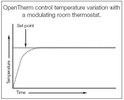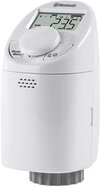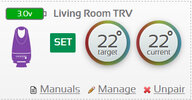For medical reasons we need to keep the heating on for 18 hours a day. With the room stat. set to 17.5 degrees C it takes the boiler approx. 45 to 60 mins to heat the house up to temp.depending on the ambient temp.. Once up to temp. the boiler cycles on/off throughout the day to maintain house to the temp. on the room stat.
However I've noticed it only takes perhaps another 10/15 mins. to increase temp to 20 degrees C. & then cycles for what appears to be a similar amount of time as at the lower temp.. Therefore by having it set to lower temp. we are only saving 10/15 mins. extra gas at full power & am wondering if it really worth it for the reduced comfort & I haven't noticed much of a reduction in gas usage.
Do my observations sound normal?
I also wonder if leaving it running 24 hours a day would really use much more gas, as there seems to be different trains of thought when you read about which is the most efficient way to run C/H.
If it is relevant we have a Logic 35 combi boiler. Thanks for any advice.
However I've noticed it only takes perhaps another 10/15 mins. to increase temp to 20 degrees C. & then cycles for what appears to be a similar amount of time as at the lower temp.. Therefore by having it set to lower temp. we are only saving 10/15 mins. extra gas at full power & am wondering if it really worth it for the reduced comfort & I haven't noticed much of a reduction in gas usage.
Do my observations sound normal?
I also wonder if leaving it running 24 hours a day would really use much more gas, as there seems to be different trains of thought when you read about which is the most efficient way to run C/H.
If it is relevant we have a Logic 35 combi boiler. Thanks for any advice.








